Chamomile Flower Tea: How to Plant, Grow, Harvest, and Blend
May 31, 2022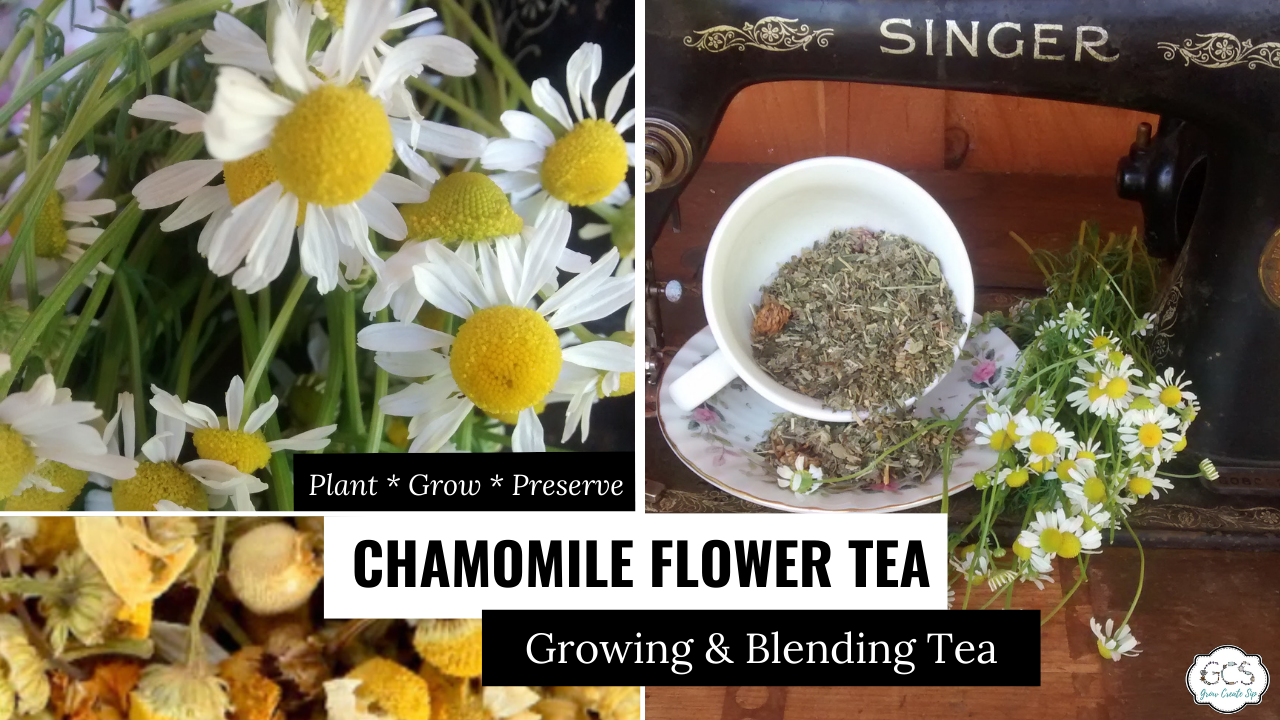
Chamomile is an easy-to-grow, common flower that brings whimsical life to any garden, and its plethora of uses means it's ideal for growing and making chamomile tea.
But how do you grow chamomile? And what goes into actually making something useful out of it?
It's not as hard as you may think, especially considering chamomile is the plant that just keeps on giving - and growing. Let's see what this little plant is all about.
What Is Chamomile?
Chamomile is part of the daisy or Asteraceae family and is a flowering medicinal plant that comes from Europe and West Asia. These days, you can find it all over the world. Chamomile can have a delightfully subtle apple-like or sweet straw scent, which may explain where it got its name.
Chamomile is actually Greek and translates to "earth apple."
The flower comes in two varieties, German and Roman Chamomile; and while they do have their differences, German chamomile is considered the most potent for herbal and therapeutic remedies. German chamomile is also most commonly used in tea because it's less bitter than Roman Chamomile.
Roman chamomile has gray-green leaves and grows to about a foot tall. Its leaves are slightly thicker than that of its German cousin, and it has white petals that encircle a bright yellow center.
Chamomile grows well in temperate areas and grows with soft, feathery leaves and delicate stems. They're topped with small daisy-like flowers with yellow cone-shaped centers and tiny white petals.
Chamomile as a Home Remedy
Chamomile is not only edible, it's good for you too. It's considered a nervine herb, which means it helps relieve the symptoms of anxiety and stress by supporting the nervous system. This makes it the best tea for sleep and calming frayed nerves.
Chamomile is also a great digestive plant, as it has anti-inflammatory and antispasmodic properties, which help to soothe an irritated stomach. Having a cup of chamomile tea after a meal should help with digestion.
It also helps with:
- Indigestion
- Constipation
- Acid Reflux
- Nausea and vomiting
- Diarrhea
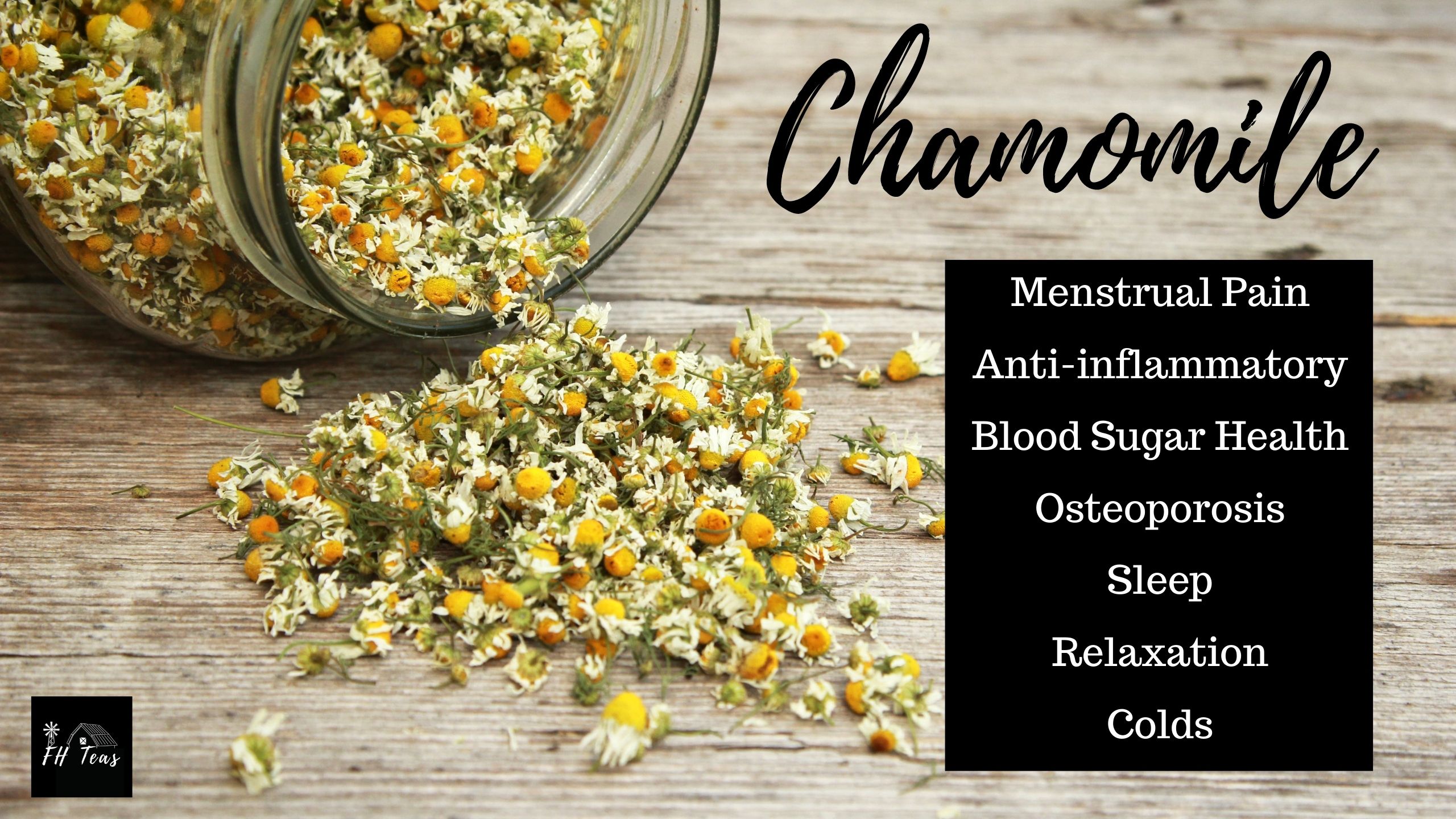
The benefits of this delightful little flower don't end at the stomach and nerves. Chamomile is a great plant for skin and hair care because of how soothing it is. It's a common ingredient in many products and is especially ideal for itchy and dry skin.
We can turn chamomile into teas, tinctures, elixirs, topical ointments, essential oils, and bath infusions. Any of these remedies could help with:
- Excitability and nervousness
- Insomnia and other sleep issues
- Anxiety and stress
- Allergies and food sensitivities
- Heart palpitations
- Menstrual complications
- Skin irritations
- Eye and mouth issues
- Stomach and bowel complaints
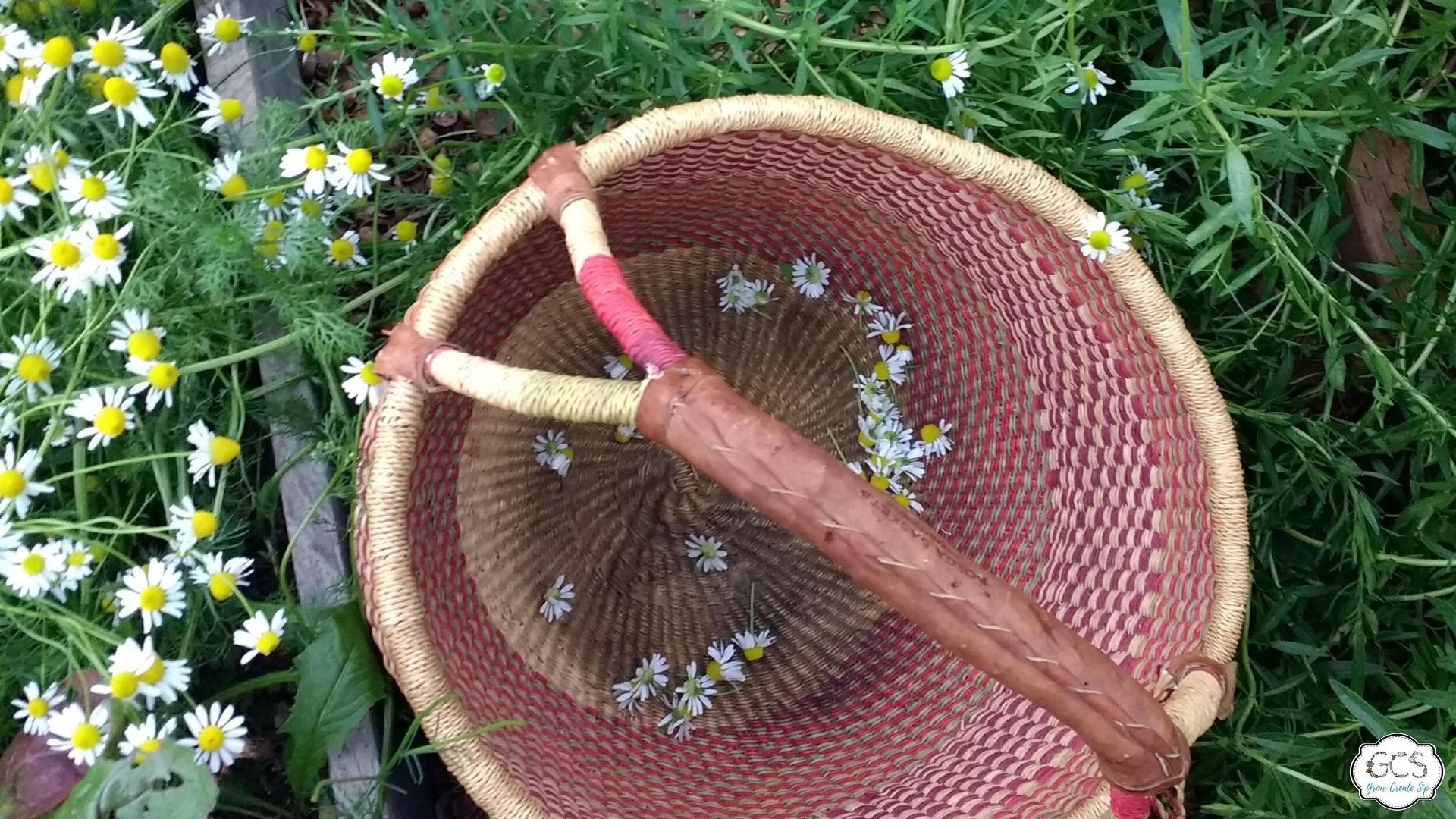
Benefits of the Chamomile Flower in the Garden
Chamomile is a great companion plant, meaning it's great for planting near other herbs and plants. They're also easy to grow from seed, unlike many other flowers. It reseeds well, so it will come back year after year on its own.
Chamomile is also a great pollinator, and butterflies and bees love them. Mosquitos, on the other hand, hate chamomile, making it a helpful mosquito deterrent.
To top it off, you can make good mulch and compost with chamomile since it's so high in nutrients.
Planting Chamomile
As we mentioned, chamomile is easy to grow and looks great in a garden, whether planted in raised beds or added to containers on your patio or porch. We also mentioned that chamomile is very easy to start from seed.
Let's look at how to go from seed to flower.
- Start your seeds indoors 6 weeks before the first frost
- Press the seeds firmly into the soil but do not cover
- Water regularly and keep soil moist
- When planting outdoors, space plants 8 inches apart
- Water immediately after planting
- As the flowers grow, use bamboo supports for top-heavy flowers
Light
While chamomile likes full sun, it's best to grow it in an area with partial afternoon shade in very hot climates. This should stop the plants from scorching - but if you live somewhere more temperate, the full daily sun is absolutely fine.
Soil and Fertilizer
During the planting phase, you'll want to mix some compost or other organic matter into the soil, though chamomile doesn't need any fertilizer on top of that. The richer the soil, the stronger the plant.
Chamomile will survive in poor soil mixtures, but they will have floppy stems. On top of rich soil, try to aim for a neutral pH level.
Water
Young chamomile plants need about an inch of water every week. As they age, they become more drought resistant. In extremely hot climates, chamomile will benefit from extra moisture, but it's best to allow the plants to dry out between these waterings.
Temperature
Because chamomile thrives in warm climates and can be relatively drought resistant, it does well in very humid areas. While it can tolerate temperatures of 100 degrees Fahrenheit, it does prefer somewhere between 60-80 degrees. Chamomile grows best in zones 3-9 based on the USDA plant hardiness zones.
Harvesting Chamomile
Fortunately for us, chamomile will continue to grow even as you pluck the flowers. In fact, it will only encourage further growth. The flowers can be used fresh or dried for later use.
Harvest chamomile when the flowers are fully open, and the petals arch backward. Simply snip the flowers with pruning sheers and catch them in a basket or bowl for easy storage. Or use a chamomile harvester as we demonstrate here.
Foraging for Chamomile
This can be a tricky one because all chamomiles are daisies, but not all daisies are chamomiles. You need to know the difference between chamomile plants and pineapple weed.
Because daisies and chamomile also look so similar, it's going to feel impossible trying to differentiate them. Your best bet is to use the petals to guide you. Chamomile petals are about 1 inch wide, with a slight notch at the end of each ray.
The centers are packed with yellow, tubular flowers, and they should have a subtle, aromatic fragrance that distinguishes them from daisies.
Pineapple weed is a close relative of chamomile and is often called wild chamomile.
While it is an edible flower and has similar benefits, its flavors are very different. Pineapple weed has no visible petals and a distinctive smell. Almost like, you guessed it, pineapples!
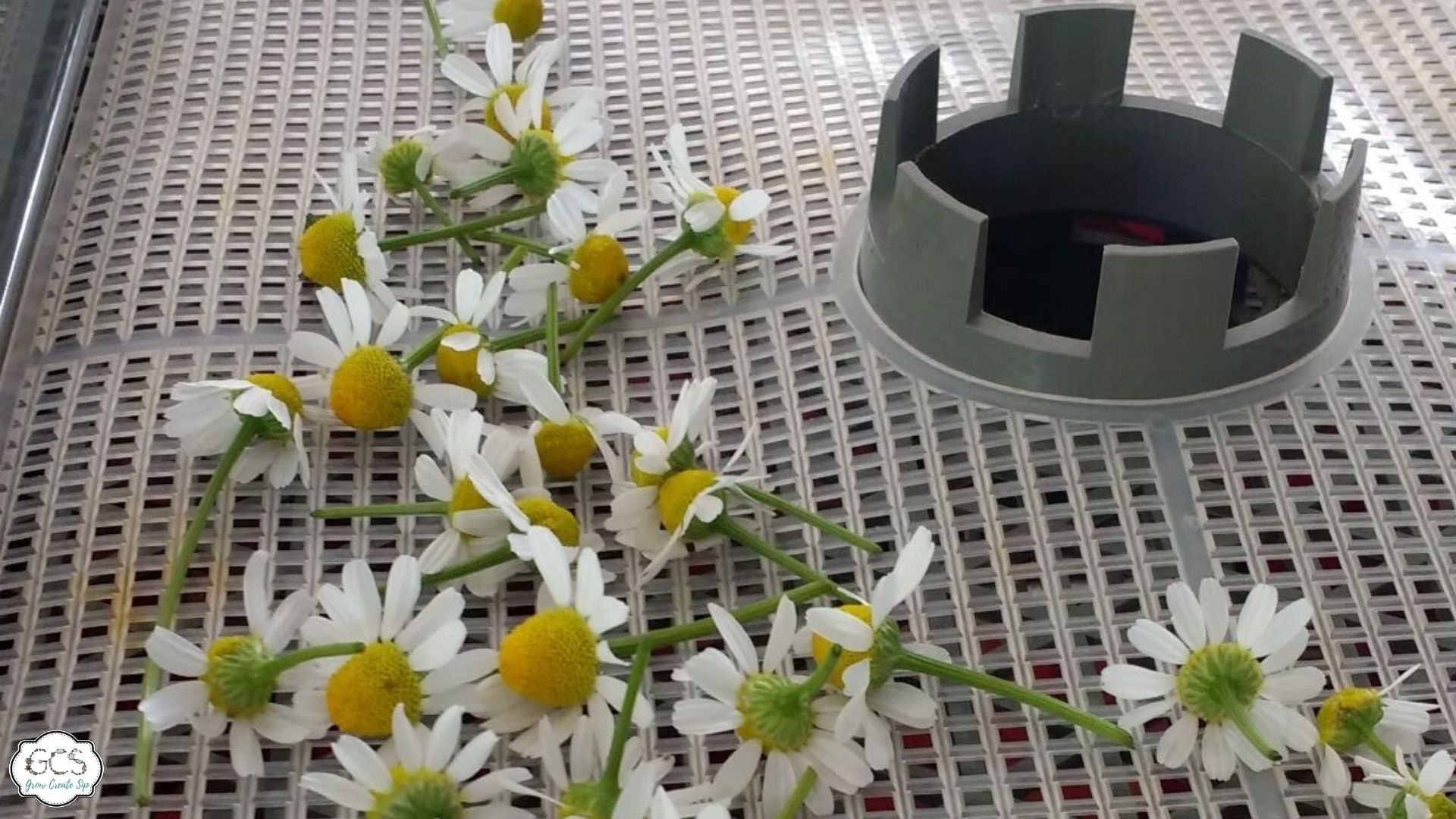
Preserving and Dehydrating
Chamomile is an easy flower to dry. If you don't have a dehydrator, you can simply place them on a sheet of parchment paper away from heat or direct sunlight and leave them to dry all the way through. This typically takes about two weeks.
To keep dust away, use a lightweight and breathable cloth to cover it. Toss the flowers occasionally to make sure they're drying properly. You'll know they're ready when the flowers crumble easily when crushed.
Using a Dehydrator
The best and most convenient way to dry chamomile is by using a dehydrator. Pre-heat your unit to around 95-115F and place the flowers in a single layer on your trays.
Depending on the temperature you've set it at, the flowers should dry in the machine in around 1-4 hours depending on the environment your dehydrator is in and the time of year. Chamomile will be crispy when dry. It is very delicate so be careful not to handle any more than necessary.
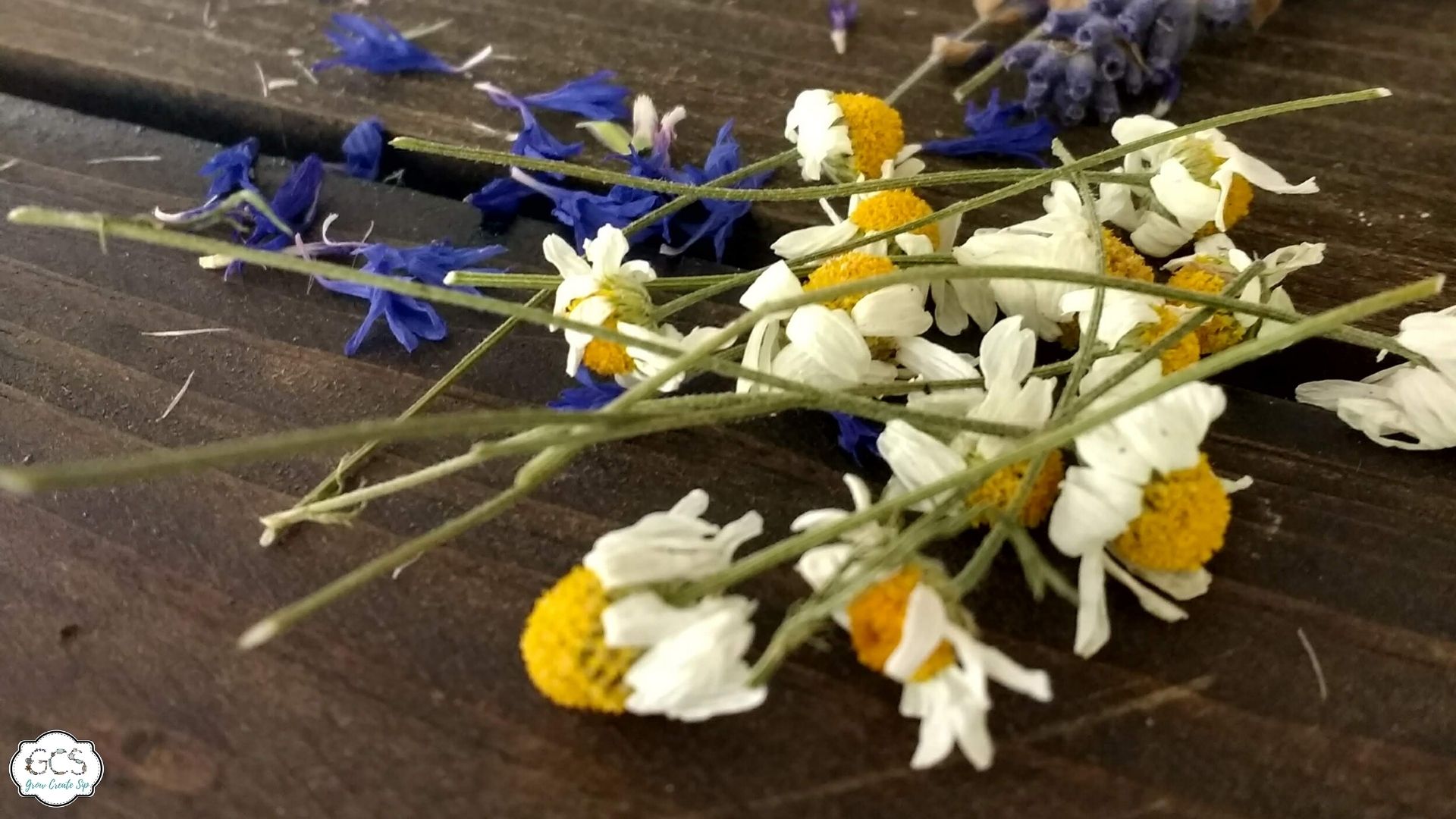
Making Your Own Chamomile Tea
While there are plenty of ways to use chamomile in different herbal preparations, tea is one of the simplest ways to make use of it. Chamomile tea for sleep is best served warm, though a glass of chamomile iced tea is incredible on a hot summer night.
You can also blend chamomile with other herbs, especially if you're aiming to target certain ailments. For example, if digestion is your primary concern, then ginger and chamomile would make for an excellent tea. Similarly, if you're struggling to sleep, adding lavender to your chamomile will put you to sleep in no time.
Rose Garden Repose is one of our most popular chamomile blends! It’s delicious and refreshing. That being said, chamomile also pairs well with other earthy flavors, so consider using it with things like:
We've got something tried and true - though we always encourage experimentation - and we've tested the balance of flavors to make sure it's just right.
Try out our lavender chamomile tea and sink away into the warm, welcome embrace of a good night's sleep.
As an added benefit, chamomile tea and pregnancy go hand in hand. It's safe to drink chamomile tea while pregnant and is a great way to stay calm and hydrated, but be sure to check with your doctor first.
Nothing Like a Warm Cup of Tea
Chamomile is a breeze to grow, a pleasure to have in the garden, and a delight for everyone involved. There's nothing quite like a warm cup of chamomile tea after a long day, especially if you've been tossing and turning at night. As far as a tea for sleeping goes, we wouldn’t reach for anything else, unless of course, you are allergic to chamomile like me. For myself, I grab the lemon balm and there are plenty of reasons why.
If you feel like you need your own personal tea blend or some help in making your chamomile tea just right make sure you check out our tea blending course in the Herbal Studio & Communi-tea. I'd love to know, have you grown chamomile before? IF so what struggles did you have with getting it to grow, if any? Let me know in the comment section below.
Read More About Edible Blooms...
- Chamomile & Edible Bloom Simple Syrup
- Dehydrating Fruits, Flowers and Roots for Tea
- How to Preserve Flowers for Tea
- Most Affordable and Productive Medicinal Plants to Grow
- Calendula Salve, Infusing Oils with Herbs
- Herbalist Garden: Getting Started














